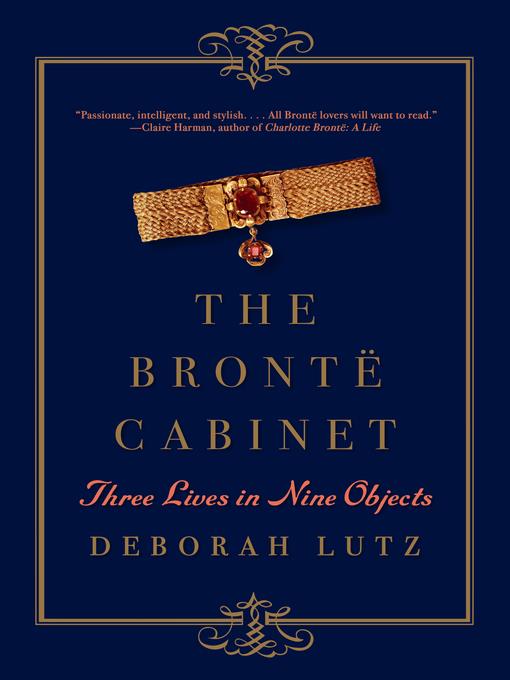
The Brontë Cabinet
Three Lives in Nine Objects
کتاب های مرتبط
- اطلاعات
- نقد و بررسی
- دیدگاه کاربران
نقد و بررسی

January 12, 2015
Applying “thing theory” to the lives and literary legacy of the Brontës, Lutz (Pleasure Bound) skillfully uses the titular nine objects to explore the relationship between the sisters’ world and their fiction. For instance, the miniscule volumes in which the Brontë sisters and their brother, Branwell, recorded their juvenilia (fantasies set in the worlds of Angria and Gondal), prompts discussion of the dearness of printed books in the early 19th century and the consolation that so many Brontë characters find in reading and owning books. A sampler made by Anne, meanwhile, is tied to the many types of needlework and knitting by which Brontë heroines contribute to their households. A chapter on each sister’s portable writing desk as a “personal space safeguarding secrets” contrasts Charlotte (who craved affection) with Emily (who was “deeply reserved”). Lutz bolsters her observations with abundant references to the Brontës’ novels, poetry, and letters, proving especially insightful on Wuthering Heights. She muses on Emily’s special relationship with the nearby moors (in connection with Branwell’s walking stick), and on the imagery of death and the afterlife that laces the novel (elaborated from locks of the Brontës’ hair kept as death mementos). Lutz commends Emily for her “visceral engagement with her subject matter,” and the same could be said of Lutz in this illuminating biographical study.

May 1, 2015
Scholar and Bronte fan Lutz (English, Long Island Univ., Pleasure Bound: Victorian Sex Rebels and the New Eroticism) brings a haptic approach to this fantastic example of "thing theory," or material culture. The nine objects the author examines and analyzes each get a dedicated chapter: some are straightforward, such as "Tiny Books," which describe the little volumes that the Bronte sisters--Emily, Charlotte, and Anne--and brother Branwell made out of scraps and remnants and composed stories for; others, such as "Fugitive Letters," discuss the physical objects written and mailed by the sisters and also provide historical and cultural context about postal service of 19th-century England. Also included are meditations on "women's work" and the often clashing personalities of the sisters and the difficulties they faced finding work and getting published. Lutz's knowledge of the Brontes and the world in which they lived and died is impressive and vast, and although it's obvious she researched and read a lot, this study is never dull. VERDICT Lutz entertains and educates in equal measure in this fascinating and readable book. Bronte lovers, Victorian history buffs, literature libraries, and cultural anthropologists, both amateur and professional, will enjoy this title.--Liz French, Library Journal
Copyright 2015 Library Journal, LLC Used with permission.

























دیدگاه کاربران